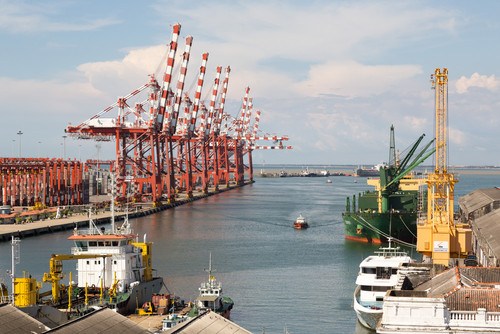The Port of Colombo attained a handsome growth in handling transshipment containers in March although Sri Lanka’s major port saw severe congestion while the country has been passing through a tough economic crisis.
Data show that the port achieved a modest 5.2% growth year-on-year in March by handling 522,178 TEU of transshipment containers, reaching total handling this year to 1.49 million TEU.
The port’s overall handling, which consists of both transshipment and Sri Lankan export and import cargoes, has also increased by 5.7% in the first quarter, compared to 2021 Q1, reaching 1.85 million TEU.
However, the port’s handling of the Sri Lankan ExIm (Export-Import) trade fell drastically by 12.9% in March compared to the same month in the previous year.
Sri Lanka is facing severe economic and political crises following the drastic fall of its foreign currency reserve due to the impact of pandemic-linked disruptions which kept away tourists from the island nation, the main earning source of the country.
Containers were stockpiled at the port yards as their release was halted due to the lack of required foreign currency. Additionally, because of failing to import adequate fuel oil, port operations were also disrupted as required trucks were not available to take delivery of boxes.
Inter-terminal box shipment was also hampered leading to a stockpile of containers at yards and increased vessels’ waiting time. Many international shipping lines are now avoiding the port and diverting boxes to other nearest transshipment hubs.
However, the Sri Lankan Port Authority (SLPA) claims that the Colombo Port has no congestion. “Colombo Port is functioning normally,” said SLPA managing director, Upul Jayathissa.
“We did have some challenges with respect to inter-terminal transfers. Those are largely over, behind us now,” commented Romesh David, CEO of the Colombo International Container Terminals.
Sharar Nayel
Asia Correspondent







